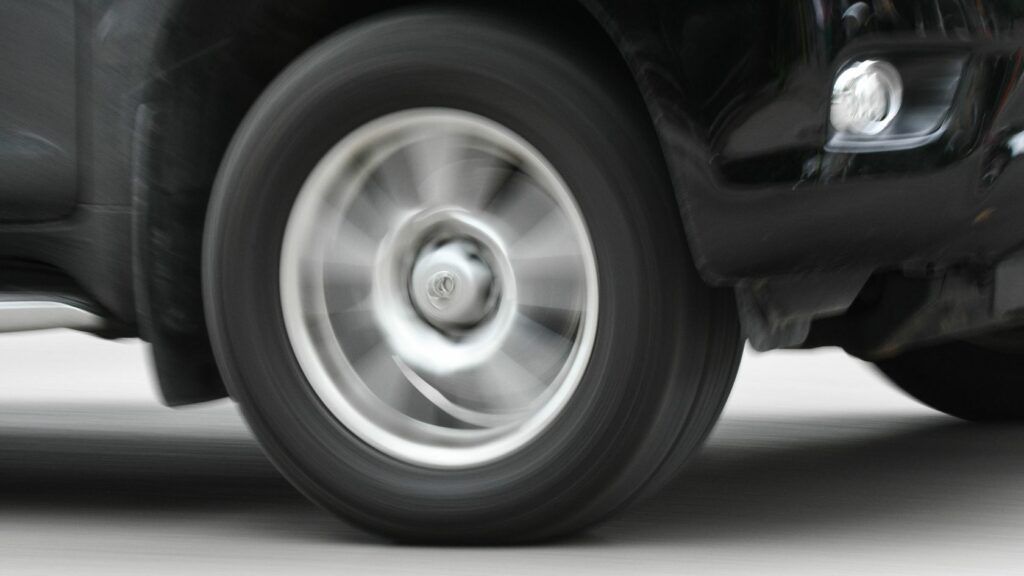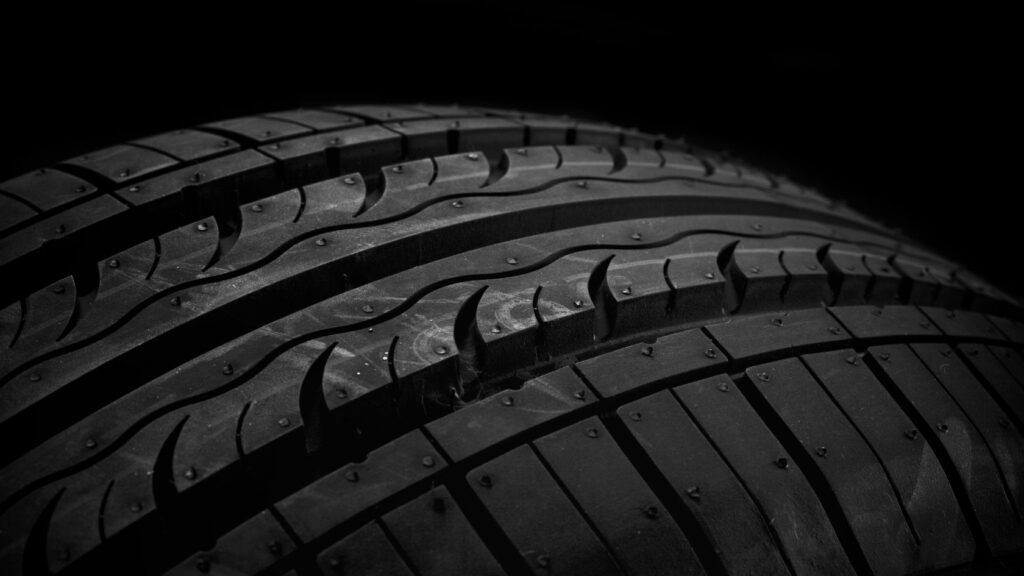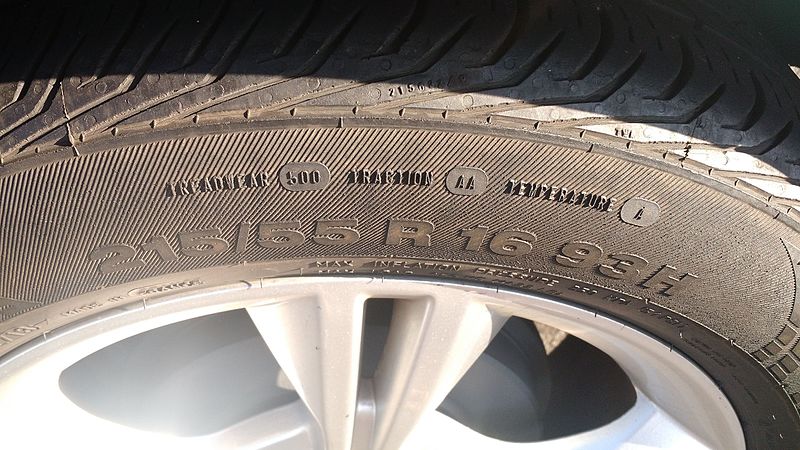
In this blog post, we will be exploring low-rolling resistance tires with their pros and cons.
Ever wondered how these specialized tires impact your driving experience? Are they truly eco-friendly, fuel-efficient, or just another automotive hype?
We will answer all these questions and more, providing you with comprehensive insights into the world of low-rolling resistance tires revealing their advantages, and potential drawbacks, and even comparing them with regular tires.
What Is A Low Rolling Resistance Tire And How Do They Work?
A low rolling resistance (LRR) tire is meticulously crafted with a harder tread compound and a sleeker tread pattern to minimize the energy needed for tire rotation.
These design elements work in harmony to diminish the friction between the tire and the road, consequently reducing rolling resistance and enhancing fuel efficiency.

But how do they achieve this feat? LRR tires operate by curbing the deformation that occurs when the tire makes contact with the road surface. As the tire rolls, it naturally deforms slightly to establish grip.
This deformation demands energy, which is precisely where LRR tires excel. Through the utilization of a harder tread compound, these tires resist deformation more effectively than their softer counterparts.
Additionally, the adoption of a smoother tread pattern, characterized by fewer grooves and sipes, means there is less surface area for the tire to grip the road, further minimizing resistance.
In essence, LRR tires are ingeniously engineered to optimize your driving experience by conserving energy, reducing friction, and ultimately enhancing fuel efficiency.
Low Rolling Resistance Tires: Pros & Cons
Here are the main advantages and disadvantages of Low Rolling Resistance (LRR) Tires:
Advantages of Low Rolling Resistance Tires:
Improved Fuel Efficiency – LRR tires can enhance fuel efficiency by up to 3%. The percentage can vary depending on the circumstances you drive in and the way tires are used.
While 3% might seem like a small percentage, it still translates into substantial savings at the gas pump over time, making them an eco-conscious choice for budget-conscious consumers.
For instance, if your car normally covers 100 miles with a full tank, LRR tires could extend that to 103 miles, saving you money in the long run. LRR tires achieve this by minimizing the energy required for movement.
Reduced Emissions and Noise – In addition to reducing fuel consumption, LRR tires also help diminish greenhouse gas emissions, such as carbon dioxide (CO2), a major contributor to climate change.
LRR tires produce fewer emissions which help in reducing the overall carbon footprint of your vehicle. Over time, this contributes to cleaner air and a healthier environment for everyone. This aligns with efforts to mitigate climate change and promote eco-friendly driving habits.
Improved Handling and Braking Performance – LRR tires with enhanced handling and braking performance can help you navigate such situations with precision. In emergency stops or sharp turns, these tires provide a better grip, ensuring a safer driving experience.
Extended Tread Life – LRR tires often have a longer lifespan than conventional tires due to their durable design. This means they need replacement less frequently, reducing waste and lessening the environmental impact associated with tire manufacturing and disposal.
Having said that, some LRR tires, due to their harder tread compounds, can be more abrasive on road surfaces. This might result in increased wear on the road and potentially contribute to road noise over time.
Enhanced Electric Vehicle Range – For electric vehicles, the reduced energy demand of LRR tires can extend the driving range on a single charge. This extended range is particularly valuable for EV owners, reducing the need for frequent charging stops.
Better Heat Dissipation – LRR tires often generate less heat during prolonged periods of use. This can be advantageous in hot climates, as reduced heat buildup can enhance tire longevity and overall performance.
Disadvantages of Low Rolling Resistance Tires:
Reduced Grip in Wet and Icy Conditions –LRR tires, while efficient in dry conditions, might struggle to maintain traction on wet or icy surfaces. This is because LRR tires have less rubber compared to conventional tires which reduces its overall grip on the surface.
The reduced grip can lead to longer braking distances and potential skidding, making it crucial to drive cautiously in adverse weather.
Increased Cost & Lack of Availability – LRR tires, although beneficial in the long term, require a larger initial investment compared to regular tires. While they save on fuel, the initial expense might be a consideration, especially for those on a tight budget.
Limited availability is another factor that contributes to the overall cost of LRR tires. Depending on your region or specific tire requirements, LRR tires might have limited availability compared to conventional tires.
This limited availability could also pose a challenge when it comes to finding the right LRR tires for your vehicle.
Reduced Comfort – LRR tires, due to their firmer construction, might transmit more vibrations and shocks to the vehicle’s cabin. This reduced comfort can impact passengers, especially during long journeys, making the ride less smooth and enjoyable.
Performance Trade-offs – In the pursuit of fuel efficiency, LRR tires might compromise certain performance aspects, such as cornering stability and high-speed handling.
If you prioritize sporty or aggressive driving characteristics, the trade-offs associated with LRR tires might not align with your preferences.
Identifying Low Rolling Resistance Tires
There are a few ways to identify low rolling resistance (LRR) tires:
UTQG rating
The UTQG (Uniform Tire Quality Grading) rating is a system used to rate tires based on their treadwear, traction, and temperature resistance. LRR tires typically have a UTQG treadwear rating of 600 or higher.

EPA Green Label
The EPA Green Label is a voluntary program that identifies tires that meet certain fuel efficiency and environmental performance criteria. LRR tires that meet the EPA Green Label criteria will have the Green Label displayed on the sidewall.
Tire Labeling
Look for the tire label, often located on the sidewall. LRR tires are sometimes marked with specific indicators like “LRR,” “Energy Saver,” or other branding that highlights their fuel-efficient properties. These labels are usually provided by tire manufacturers to help consumers identify LRR tires easily.
Consult Tire Retailers or Mechanics
Tire retailers and automotive mechanics can provide valuable guidance. They are knowledgeable about various tire brands and models, including their fuel efficiency features.
Ask them specifically about LRR options and their recommendations for your vehicle type.
Low Rolling Resistance Tires vs. Regular Tires Vs. Run-flat Tires
Here is a comparison of LRR tires Vs regular tires Vs run-flat tires:
| CHARACTERISTICS | LRR TIRES | REGULAR TIRES | RUN-FLAT TIRES |
| Fuel efficiency | Better | Worse | Worse |
| Emissions | Lower | Higher | Higher |
| Grip | Lower | Higher | Higher |
| Comfort | Lower | Higher | Higher |
| Noise levels | Lower | Higher | Higher |
| Tread life | Longer | Shorter | Shorter |
| Cost | More Expensive | Less Expensive | More Expensive |
| Can be driven without air | No | No | Yes |
LRR tires are generally better for fuel efficiency and emissions, while regular tires and run-flat tires offer better grip and comfort. LRR tires also tend to have longer tread life, but they are more expensive than regular tires and run-flat tires.
Run-flat tires also have the additional advantage of allowing you to drive for a short distance (typically up to 50 miles) even if the tire goes flat. This can be helpful in an emergency situation, but it is important to note that run-flat tires are not designed to be driven flat for long distances.
The best type of tire for you will depend on your individual needs and driving conditions. If you are looking for the most fuel-efficient tire with the lowest emissions, then LRR tires are the better choice.
However, if you need a tire that provides more grip, and comfort, or if you drive in wet or icy conditions frequently, then regular tires may be a better option.
If you want to go a few extra miles with deflated tires with better grip, and comfort then run-flat tires should be your preference.
Maintenance and Safety Considerations for Low Rolling Resistance Tires
Here are some tips on how to maintain low rolling resistance (LRR) tires for optimal performance and longevity:
- Maintain proper tire inflation – This is the most important thing you can do to extend the life of your LRR tires and get the best fuel economy. Check your tire pressure regularly, at least once a month, and inflate your tires to the manufacturer’s recommended pressure. You can find the recommended tire pressure for your vehicle on the driver’s side doorjamb.
- Rotate your tires regularly – Tire rotation helps to ensure that all of your tires wear evenly. This is especially important for LRR tires, which are designed to have a longer tread life. Rotate your tires every 5,000 to 7,500 miles, or according to your vehicle’s owner’s manual.
- Get your wheels aligned regularly – Wheel alignment is important for all tires, but it is especially important for LRR tires. LRR tires are designed to have a specific amount of camber, which is the inward or outward tilt of the tire. If your wheels are not aligned properly, it can cause the tires to wear unevenly and reduce their lifespan. Get your wheels aligned every 10,000 to 12,000 miles, or according to your vehicle’s owner’s manual.
- Avoid hard braking and acceleration – Hard braking and acceleration can put extra wear on your tires and reduce their lifespan. Drive smoothly and avoid sudden stops and starts whenever possible.
- Avoid driving on rough roads – Driving on rough roads can damage your tires and shorten their lifespan. If possible, avoid driving on rough roads, such as gravel or dirt roads.
- Inspect your tires regularly – Look for any signs of damage, such as cuts, tears, or bulges. If you see any damage, take your tires to a tire dealer to be inspected and repaired or replaced as needed.
- Be aware of the limitations of LRR tires – LRR tires may not provide the same level of grip and handling performance as conventional tires in wet or icy conditions. Be extra cautious when driving in these conditions and allow extra time for stopping.
- Increase your following distance – This will give you more time to react and brake safely if the vehicle in front of you stops suddenly.
Final thoughts
In the ever-evolving landscape of automotive technology, the choice of tires can significantly impact your driving experience.
Low rolling resistance (LRR) tires have eco-friendly attributes, reduced emissions, slightly better fuel efficiency, and quieter ride than regular tires.
Their innovative design minimizes rolling resistance, ultimately saving you money at the pump while also contributing to a cleaner environment.
However, LRR tires are more expensive and offer reduced grip in challenging weather conditions. Their availability is limited which means evaluating your vehicle’s compatibility and driving conditions to decide on LRR tires.
Your vehicle’s performance and your commitment to a greener planet and a smoother, safer ride depend on the choice of tires you choose so, ensure to refer to our guide on low rolling resistance before making a final decision.
